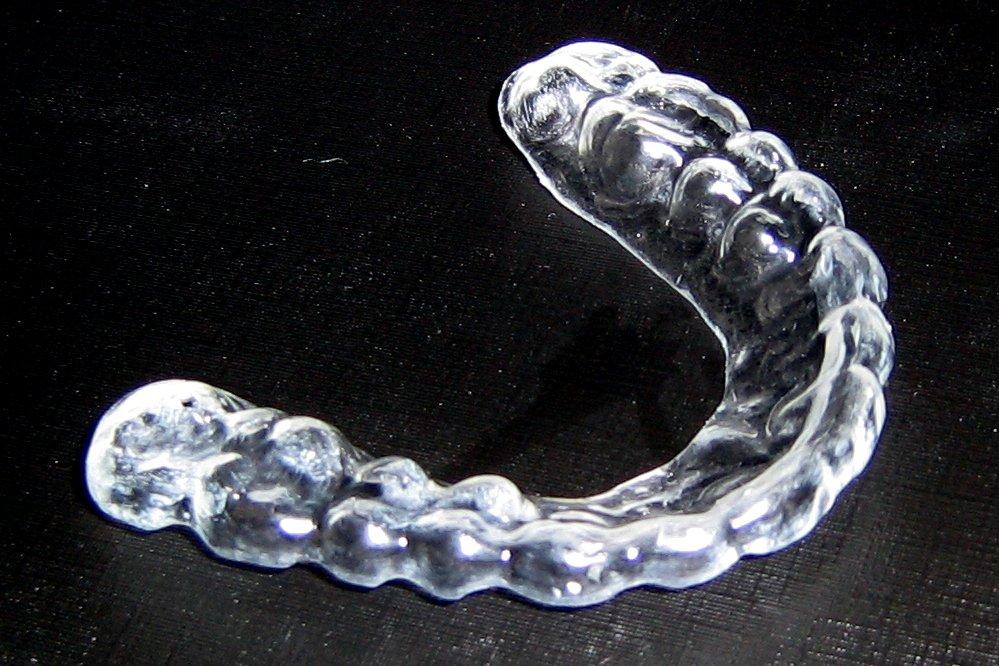Occlusal splint
Editor-In-Chief: C. Michael Gibson, M.S., M.D. [1]
Overview
|
WikiDoc Resources for Occlusal splint |
|
Articles |
|---|
|
Most recent articles on Occlusal splint Most cited articles on Occlusal splint |
|
Media |
|
Powerpoint slides on Occlusal splint |
|
Evidence Based Medicine |
|
Clinical Trials |
|
Ongoing Trials on Occlusal splint at Clinical Trials.gov Trial results on Occlusal splint Clinical Trials on Occlusal splint at Google
|
|
Guidelines / Policies / Govt |
|
US National Guidelines Clearinghouse on Occlusal splint NICE Guidance on Occlusal splint
|
|
Books |
|
News |
|
Commentary |
|
Definitions |
|
Patient Resources / Community |
|
Patient resources on Occlusal splint Discussion groups on Occlusal splint Patient Handouts on Occlusal splint Directions to Hospitals Treating Occlusal splint Risk calculators and risk factors for Occlusal splint
|
|
Healthcare Provider Resources |
|
Causes & Risk Factors for Occlusal splint |
|
Continuing Medical Education (CME) |
|
International |
|
|
|
Business |
|
Experimental / Informatics |

Occlusal splints (also called bite splints, bite planes, or night guards) are removable dental appliances carefully molded to fit the upper or lower arches of teeth.
They are used to protect tooth and restoration surfaces, manage mandibular (jaw) disfunction, and stabilize occlusion or create space prior to restoration procedures. People prone to nocturnal bruxism, or nighttime clenching, should routinely wear occlusal splints (sometimes called night guards in this context) at night.
Occlusal splints are typically made of a heat-cured acrylic resin. Soft acrylic or light cured composite, or vinyl splints may be made more quickly and cheaply, but are not as durable, and are more commonly made for short-term use. Soft splints are also used for children, because normal growth changes the fit of hard splints.
They generally cover all the teeth of the upper or lower arch, but partial coverage is sometimes used. Occlusal splints are usually used on either the upper or the lower teeth, termed maxillary splints or mandibular splints respectively, but sometimes both types are used at the same time. Maxillary splints are more common, although various situations favor mandibular splints.
Stabilizing or Michigan-type occlusal splints are generally flat against the opposing teeth, and help jaw muscle relaxation, while repositioning occlusal splints are used to reposition the jaw to improve occlusion.
References
- "Tooth surface loss; Part 3: Occlusion and splint therapy" British Dental Journal, Vol. 186, No. 5, 1999-03-13, via nature.com. Retrieved on 2007-08-18.
- Widmalm, Sven E. "Bite Splints in General Dental Practice", (Website, lectures from author's homepage), University of Michigan, 2003-11-14. Retrieved on 2007-08-19.
- Widmalm, Sven E. "Use and Abuse of Bite Splints", (Website, lectures from author's homepage), University of Michigan, 2004-10-27. Retrieved on 2007-08-19.